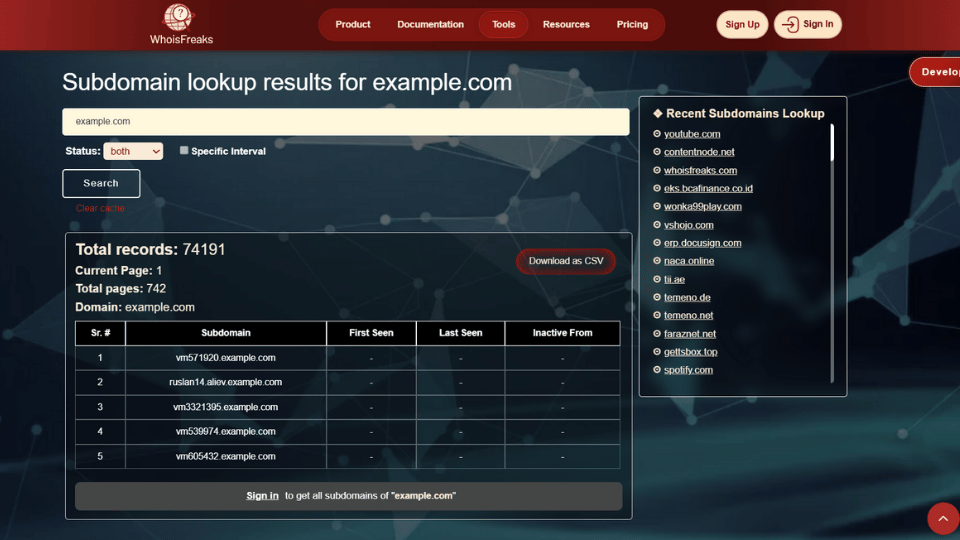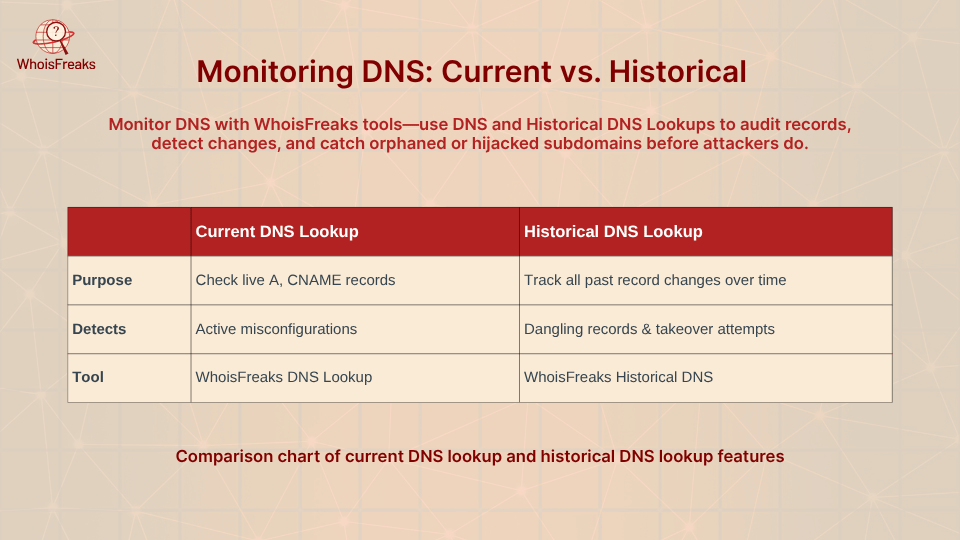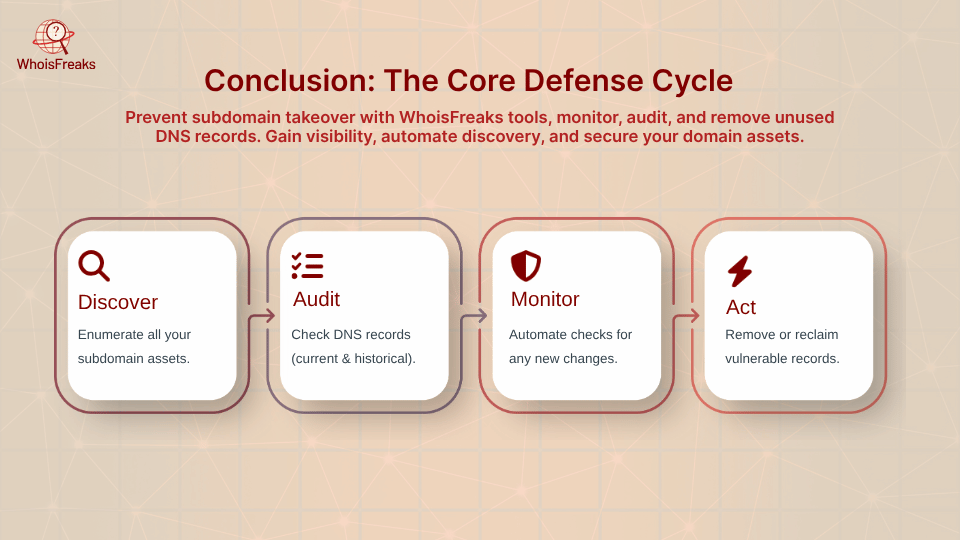
Essential Strategies to Prevent Subdomain Takeover Vulnerabilities
A subdomain takeover occurs when an attacker gains control of a subdomain because its DNS record points to a service that no longer exists. Typically, this happens when a CNAME record or other DNS record remains active but no host is actually serving content at that address. In effect, the DNS entry is like a powered electrical outlet with no appliance plugged in an attacker can “plug in” their own malicious content.
For example, suppose support.screenshotapi.net CNAMEs to screenshot.zendesk.net, but the company stops using Zendesk without removing the DNS entry. Then an attacker could create a new Zendesk account under that name and hijack support.screenshotap.net to host a fake login form. This situation is called a dangling DNS record a DNS entry exists, but no valid host is providing content
Understanding Subdomain Takeover
Subdomain takeover happens when the subdomain DNS record is pointing to a deactivated or unclaimed resource. To provide an illustration, when survey.uber.com used to point to a Heroku application that Uber deleted, an attacker could make another application with the name survey.uber.com and reclaim it.

The hacker would then be able to put phishing sites or a virus on what appears to be a working Uber URL that can be identified through CNAME records. This occurred in 2017: security researcher Avinash Jain discovered that surveys.uber.com still had a third-party service that was not in use, and that it could be easily leveraged. One of the attackers alleged that a page stealing credentials had been hosted successfully in the domain of service, and that it had duped the users into believing the service.
The danger is severe due to the fact that subdomains tend to be forgotten; hence, it is crucial to identify them regularly . Test sites that are spun up by teams spin down or are abandoned on the cloud with no clean up of DNS. When a subdomain is kept publicly resolvable and it is outdated, an attacker may easily take control of it. To illustrate, hackers will persist in scanning CNAME or A records that target decommissioned cloud services and they will then take over control before anyone realizes.
Subdomain Discovery with WhoisFreaks
The first step in prevention is knowing every subdomain your organization controls to access potential vulnerabilities. WhoisFreaks offers a Subdomains Lookup Tool / API that enumerates all known subdomains for a given domain. For example, an API call like
curl -X GET https://api.whoisfreaks.com/v1.0/subdomains?domain=example.com&status=active&apiKey=
returns a JSON list of subdomains. Each entry includes fields like subdomain, first_seen, and last_seen. The “first_seen” and “last_seen” timestamps show when each subdomain was discovered, helping you spot outdated or inactive services.

By using this tool, you can map your entire attack surface. As one WhoisFreaks guide explains, you should “scan your domain for newly created, forgotten, or unauthorized subdomains that may be exploited by attackers”. In practice, you’d regularly query the Subdomains Lookup API and compare results. Any unexpected subdomain, which could be a target for phishing campaigns, can be flagged for review. This automated inventory helps prevent blind spots that attackers could slip through.
In addition to active enumeration, WhoisFreaks includes historical data. The Subdomains API can also list inactive subdomains (if you set status=inactive), revealing records that once existed but are now down. This is critical: an inactive subdomain often means the linked service was removed, making it a takeover risk. The API’s “first_seen”/“last_seen” fields mean you can detect if a service linked to the target domain stopped responding at a certain point. As WhoisFreaks notes, such timeline data gives historical visibility into the presence and potential removal of services.
Key Feature: Subdomain Enumeration fetches all known subdomains for a given domain. This lets you discover hidden endpoints. Doing this regularly ensures no subdomain is forgotten.
Monitoring DNS Configurations

Once you have a list of subdomains, the next step is to check their DNS records. WhoisFreaks provides DNS tools to do this: the DNS Lookup Tool / API and Historical DNS Lookup Tool. These let you verify what each subdomain points to and how it has changed over time.
Using the DNS Lookup API, you can programmatically query any subdomain to see its current A, CNAME, or other records. For instance, if it unexpectedly points to an unfamiliar IP or external domain, that’s a red flag. WhoisFreaks also offers bulk DNS lookups, which can check many hosts at once.
For a deeper audit, the Historical DNS tool is invaluable. In one real-world scenario, a security team saw a suspicious URL in a phishing email (auth-login.screenshotapi.net) and used WhoisFreaks tools to investigate. They ran a Subdomains Lookup and saw auth-login.screenshotapi.net was active.

Then, using DNS Lookup, they saw it resolved to a cloud IP that their company doesn’t use. A Historical DNS query revealed that this subdomain had been inactive for months, then suddenly pointed to a third-party IP, with a CNAME linking to a known phishing site. That sequence of DNS queries showed it was a hijacked subdomain takeover/impersonation in progress, allowing them to act before damage.
This example illustrates two strategies in the process of preventing subdomain takeover :
- Audit DNS records regularly: As advised by security experts, manually and programmatically review all CNAME and A records to ensure each points to an active, intended service. WhoisFreaks DNS tools automate this. You could write a script that runs a DNS lookup on each subdomain from the Subdomains API, alerting if any target looks invalid or unused.
- Check for orphaned or dangling records: Sometimes an expired or deleted service leaves a “dangling” CNAME. The Historical DNS tool helps catch these. Regularly comparing current vs. historical records flags orphaned entries before attackers exploit them. WhoisFreaks even notes you can use Historical DNS to uncover valuable insights into [a hostname’s] changing IP addresses, which in turn reveals unexpected changes.
Implementing Preventive Measures
Having the right tools is only half the battle; you also need disciplined procedures. Based on industry best practices, here are the steps you can implement with WhoisFreaks:

- Inventory All Subdomains: Regularly run a WhoisFreaks Subdomains Lookup for your domains. Use the results to maintain an up-to-date list (or database) of every subdomain, along with its first_seen/last_seen. A suggested practice is to perform this scan at least monthly. Any subdomain not recognized by your teams should be investigated immediately. WhoisFreaks’ documentation even emphasizes tracking “both the present and historical subdomains” to maintain proper inventory.
- Audit DNS Records: For each discovered subdomain, use the DNS Lookup API to confirm its records. Ensure each CNAME or A record points to a currently used service. If a record points to an unfamiliar provider or an expired domain, flag it.
- Check Historical Data: Use WhoisFreaks’ Historical DNS Lookup to examine any suspicious subdomain. Look for anomalies like a subdomain that was inactive, then suddenly reactivated. If a subdomain’s history shows long inactivity, treat it as orphaned. If it then points to a new target, assume takeover risk. This step catches hidden issues: as the earlier example showed, a subdomain repurposed for phishing had exactly that pattern in historical records.
- Monitor and Alert: Automate these checks. You might script the above steps and schedule them in your environment. Each time the WhoisFreaks Subdomains API is called, compare the output with the previous inventory. If a new subdomain appears, trigger an alert. Similarly, fetch the daily Subdomains Database feed and watch for changes under your domains. Alert on any new or inactive-but-resolving entries.
- Remove or Take Action: When you find an orphaned or vulnerable subdomain, act promptly. Either delete the DNS record (if the service is truly not needed) or recreate/claim the service so it can’t be seized.
Case Study: Uber’s Surveys Subdomain

A real example illustrates the danger. In 2017, Uber had a subdomain surveys.uber.com that was supposed to point to a third-party surveys service. When Uber stopped using that service, they failed to remove or update the DNS record. Security researcher Avinash Jain noticed that the CNAME still pointed to a Heroku host that no longer belonged to Uber. An attacker could have quickly claimed that Heroku app name and hosted malicious content at surveys.uber.com. Because the URL looked like an official Uber subdomain, users would trust it perhaps entering login credentials or personal data. Fortunately, this issue was discovered and reported, but it highlights the risk: forgotten subdomains are as good as open invitations to attackers.
Uber’s case underscores every strategy above. If Uber had had an up-to-date subdomain inventory, surveys.uber.com would have shown as inactive (last seen), triggering review. A DNS audit would have noted that the pointed service was deprecated. Monitoring tools would have flagged the reactivation of that target. Using WhoisFreaks tools would have caught surveys.uber.com as an active subdomain and its dead target, prompting cleanup before an attacker could exploit it.
Conclusion
Subdomain takeover is a stealthy but preventable threat. The keys to defense are full visibility and routine hygiene. With the features of WhoisFreaks, organizations gain that visibility: the Subdomains Lookup tool/API finds every subdomain, the DNS Lookup and Historical DNS tools check their targets, and the Subdomains Database provides continuous monitoring. In practice, you should regularly enumerate your domains, audit each DNS record, and use automated alerts for any anomalies. When unused services are retired, remove or claim the corresponding subdomains.
By following these strategies auditing DNS, automating subdomain discovery, and applying best practices you can secure your DNS zone and keep attackers from hijacking your infrastructure. As experts remind us, preventing subdomain takeover is about disciplined asset management and leveraging the right tools. WhoisFreaks makes those tools accessible and easy to integrate, turning what could be blind spots into well-charted territory.

FAQs
1. Can a subdomain be taken over?
Yes. A subdomain can be taken over if its DNS record points to an unused or deleted service, especially if it does not have a valid SSL certificate allowing attackers to claim and control it.
2. Is a CNAME the same as a subdomain?
No. A subdomain is a part of your main domain (like blog.screenshotapi.net), while a CNAME is a DNS record that tells where that subdomain should point.
3. Why should you ignore the subdomain?
You shouldn’t ignore subdomains, as forgotten or unused ones can become security risks and may turn into a compromised subdomain taken over by attackers.
4. What is subdomain hijacking?
Subdomain hijacking happens when an attacker gains control of your subdomain through misconfigured or outdated DNS records.

Software Engineer
A software engineer focused on developing scalable, efficient solutions. Expertise in coding, system optimization, and utilizing advanced technologies for high-performance apps.
Related Posts

Understanding Domain Fronting: Benefits, Risks, an...
Explore the benefits and risks of domain fronting, its applications, and how it impacts online privacy. Read the article for a comprehensive overview.
Published at: Nov 20, 2025

How to Access and Utilize Newly Registered Domains...
Discover how to access and utilize daily newly registered domains to enhance your online strategy. Read the article for practical tips and insights.
Published at: Mar 14, 2025

How MSSPs can strengthen network resilience using ...
Domain history helps MSSPs detect threats early, strengthen security, and prevent breaches. Regular WHOIS checks enhance network resilience.
Published at: Feb 28, 2025